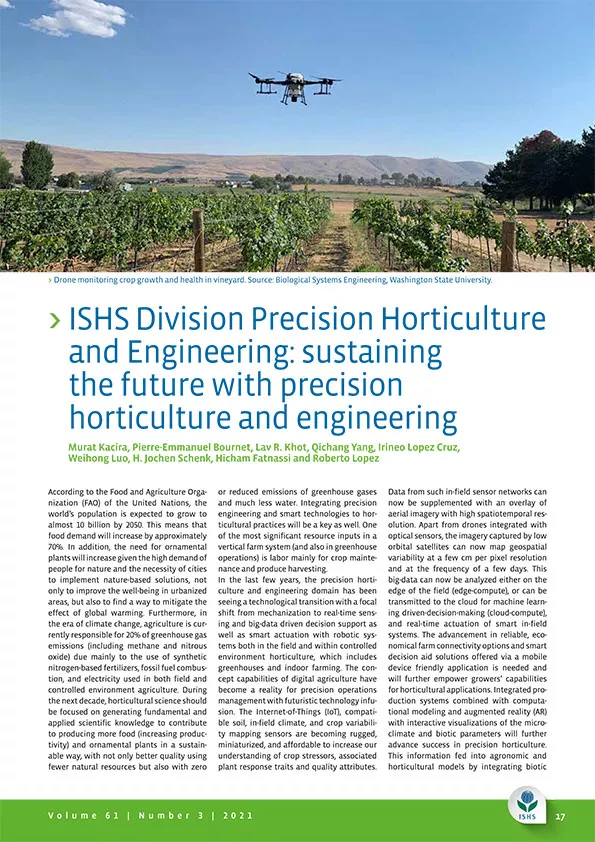ISHS Division Precision Horticulture and Engineering: sustaining the future with precision horticulture and engineering
According to the Food and Agriculture Organization (FAO) of the United Nations, the world’s population is expected to grow to almost 10 billion by 2050. This means that food demand will increase by approximately 70%. In addition, the need for ornamental plants will increase given the high demand of people for nature and the necessity of cities to implement nature-based solutions, not only to improve the well-being in urbanized areas, but also to find a way to mitigate the effect of global warming. Furthermore, in the era of climate change, agriculture is currently responsible for 20% of greenhouse gas emissions (including methane and nitrous oxide) due mainly to the use of synthetic nitrogen-based fertilizers, fossil fuel combustion, and electricity used in both field and controlled environment agriculture. During the next decade, horticultural science should be focused on generating fundamental and applied scientific knowledge to contribute to producing more food (increasing productivity) and ornamental plants in a sustainable way, with not only better quality using fewer natural resources but also with zero or reduced emissions of greenhouse gases and much less water. Integrating precision engineering and smart technologies to horticultural practices will be a key as well. One of the most significant resource inputs in a vertical farm system (and also in greenhouse operations) is labor mainly for crop maintenance and produce harvesting.
Year
2021
Publication Source
International Society for Horticultural Science
Publication type
Scientific Paper
Volume/Chapter/Issue
61
Page Number
17-20











